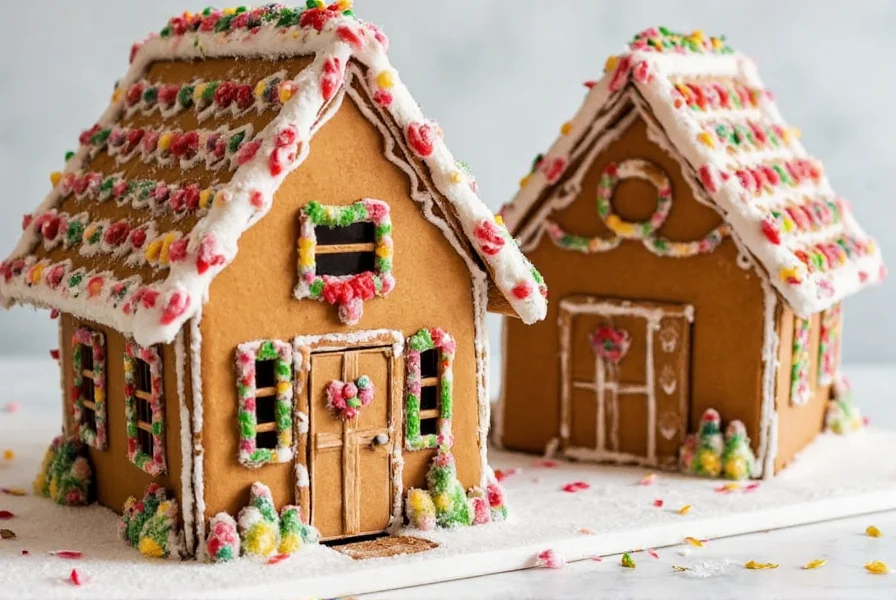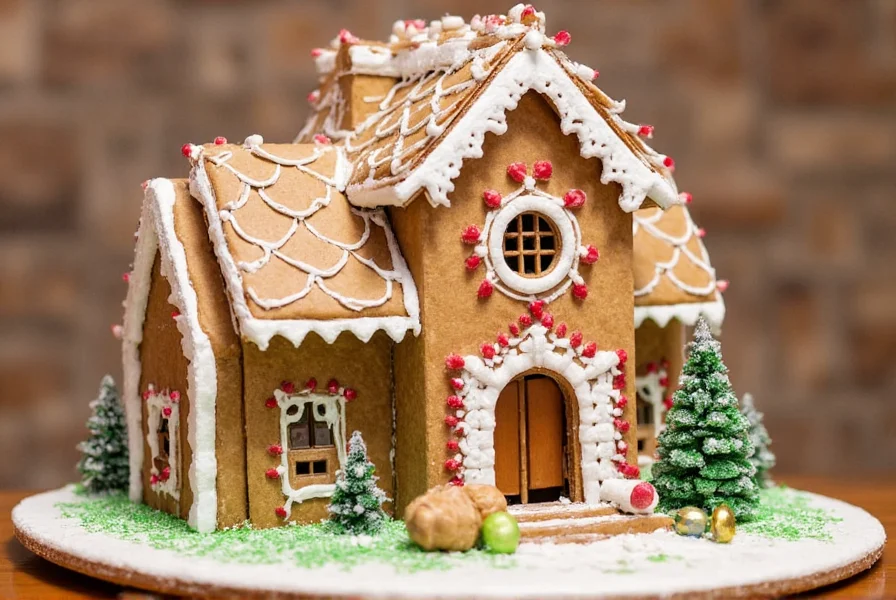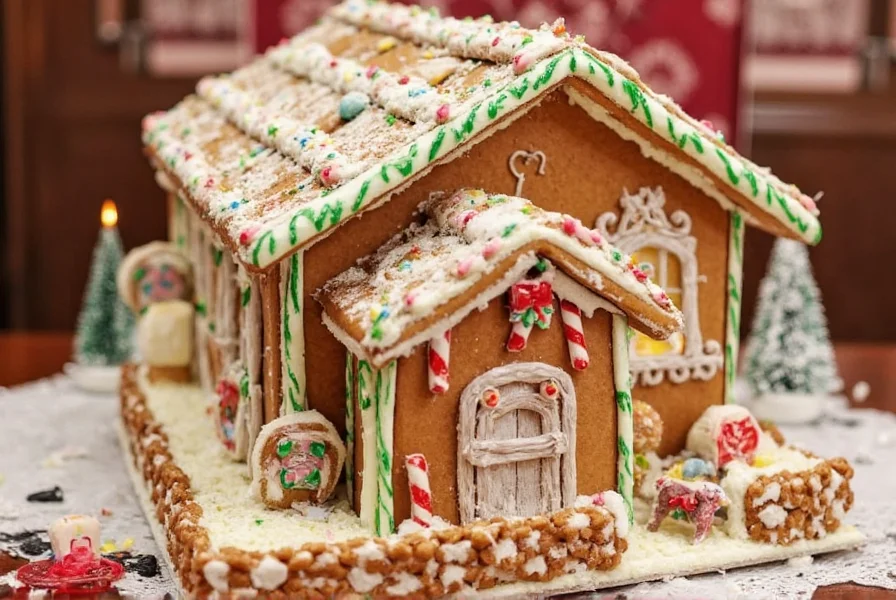Gingerbread houses represent one of the most beloved holiday traditions worldwide, combining culinary artistry with cultural heritage. These edible structures have transformed from humble European folk art to sophisticated centerpieces of Christmas celebrations. Understanding their evolution reveals why they continue captivating both children and adults generations after their creation.
The European Origins of Gingerbread Architecture
Gingerbread's journey began in 15th-century Europe when ginger spice became widely available through expanding trade routes. German bakers pioneered lebkuchen, a spiced honey cake that evolved into the gingerbread we recognize today. By the 16th century, elaborate gingerbread designs appeared at seasonal markets, with Nuremberg establishing itself as Germany's gingerbread capital.
The architectural transformation occurred when bakers started constructing three-dimensional houses using gingerbread walls held together with royal icing. These early traditional German gingerbread house creations featured intricate pipe work and decorative elements made from available candies and dried fruits. The practice spread throughout Europe, with each region developing distinctive styles reflecting local architectural traditions.
Hansel and Gretel: The Fairy Tale That Changed Everything
The 1812 publication of the Brothers Grimm's Hansel and Gretel dramatically elevated gingerbread houses from regional specialty to global phenomenon. The story's witch's candy-covered cottage captured imaginations worldwide, transforming gingerbread houses from seasonal treats into powerful storytelling elements.
Before the fairy tale's influence, gingerbread structures were primarily decorative market items. Afterward, families began recreating the witch's cottage as holiday gingerbread house projects, establishing the tradition of building edible homes during Christmas celebrations. This cultural shift cemented gingerbread houses as essential components of winter holiday festivities across multiple continents.
From European Tradition to Global Holiday Staple
Gingerbread house construction crossed the Atlantic with German immigrants in the 19th century, finding fertile ground in America's growing Christmas traditions. The practice gained momentum during the Victorian era when elaborate holiday decorations became fashionable among middle and upper classes.
By the 20th century, gingerbread houses had become mainstream holiday activities. The introduction of pre-cut gingerbread house kits in the 1970s democratized the tradition, making it accessible to families without advanced baking skills. Today, gingerbread house building ranges from simple family activities to competitive culinary art forms with professional competitions offering substantial prizes.
| Region | Distinctive Features | Traditional Decorations |
|---|---|---|
| Germany | Elaborate architectural details | Marzipan fruits, gold leaf accents |
| Scandinavia | Simpler geometric shapes | Dried berries, cinnamon sticks |
| United States | Colorful candy extravaganzas | Gummy bears, chocolate bars, candy canes |
| Eastern Europe | Intricate lace-like patterns | Poppy seeds, honey drizzle |
Building Techniques for Authentic Gingerbread Houses
Creating a structurally sound gingerbread house requires understanding both baking science and architectural principles. The ideal gingerbread recipe balances flavor with structural integrity—too soft and walls collapse; too hard and pieces won't adhere properly. Professional bakers recommend a 1:1 ratio of ginger to cinnamon with precise measurements of molasses for optimal texture.
Modern gingerbread house construction methods have evolved significantly. While traditional builders used nothing but gingerbread and royal icing, contemporary techniques incorporate hidden supports like cardboard bases and internal dowels for larger structures. The most successful builders understand that patience proves essential—allowing each component to dry completely before assembly prevents structural failures.

Gingerbread Architecture Today: Beyond Holiday Tradition
Contemporary gingerbread house creation has evolved into a sophisticated art form. Annual competitions like the National Gingerbread House Competition in Asheville, North Carolina, attract thousands of entries featuring structures with working elements, elaborate landscapes, and astonishing architectural complexity.
Professional chefs now treat gingerbread architecture as serious culinary art, creating pieces that blend traditional techniques with modern design principles. Some artists incorporate non-edible elements like LED lighting and kinetic components, pushing the boundaries of what constitutes a modern gingerbread house creation. These innovations have transformed gingerbread houses from simple holiday crafts into legitimate expressions of edible architecture.
Why This Tradition Endures
The enduring appeal of gingerbread houses lies in their unique combination of sensory experiences and intergenerational connection. Building these edible structures engages multiple senses—sight, smell, taste, and touch—creating powerful memory anchors. The collaborative nature of construction fosters family bonding, with grandparents teaching grandchildren techniques passed through generations.
Unlike many holiday traditions that have faded, gingerbread houses maintain relevance because they adapt to contemporary contexts while preserving historical roots. Whether constructed as simple family projects or elaborate artistic statements, they continue symbolizing warmth, creativity, and the spirit of celebration during winter months.

Frequently Asked Questions
What's the difference between gingerbread for houses and regular gingerbread cookies?
Gingerbread for houses uses a sturdier recipe with less sugar and more structural ingredients like additional flour and spices. The dough must maintain shape during baking and support weight when assembled, unlike softer cookie recipes designed primarily for eating.
How do you prevent gingerbread house walls from collapsing?
Successful builders allow cut pieces to dry completely before assembly, use thick royal icing as 'cement,' and often incorporate hidden supports like cardboard bases. Building on a stable surface and letting each section set for 24 hours before adding new elements prevents structural failures.
Can you eat a gingerbread house after building it?
Yes, but the texture changes over time. Fresh gingerbread houses remain edible for 2-3 weeks before becoming too hard. Royal icing decorations stay edible longer than the gingerbread itself. Many families treat their creations as temporary decorations before dismantling and enjoying the components.
What's the origin of using candy to decorate gingerbread houses?
Candy decoration originated in 16th-century Germany when bakers used available sweet treats like dried fruits, nuts, and honey drops. The practice evolved with candy manufacturing advancements, particularly after World War II when mass-produced candies became widely available, transforming gingerbread houses into the colorful creations we recognize today.
How did gingerbread houses become associated with Christmas?
The Christmas connection developed gradually through the 19th century. German immigrants brought the tradition to America during Christmas celebrations, and Victorian-era emphasis on elaborate holiday decorations created the perfect environment for gingerbread houses to become Christmas staples rather than general winter treats.











 浙公网安备
33010002000092号
浙公网安备
33010002000092号 浙B2-20120091-4
浙B2-20120091-4